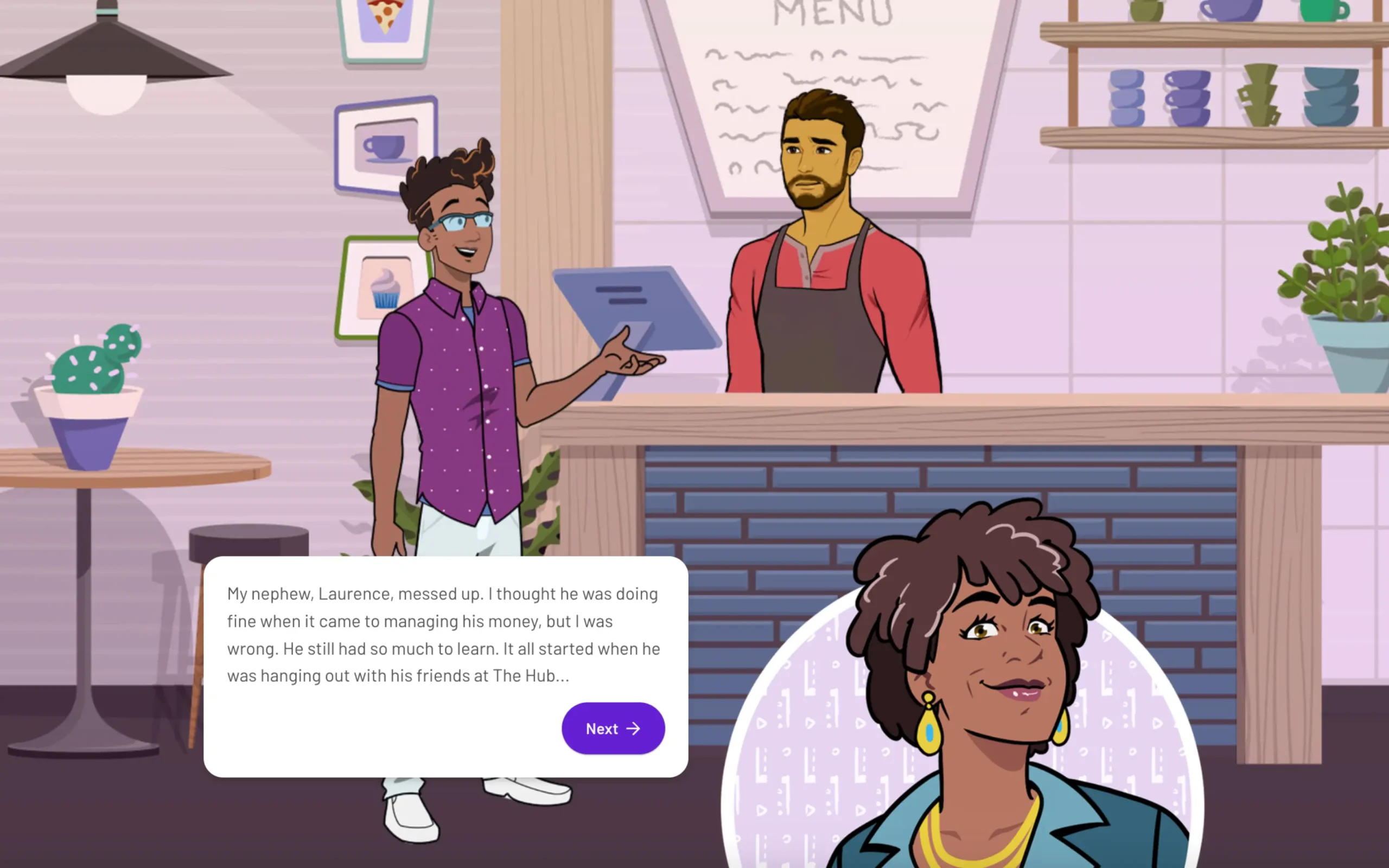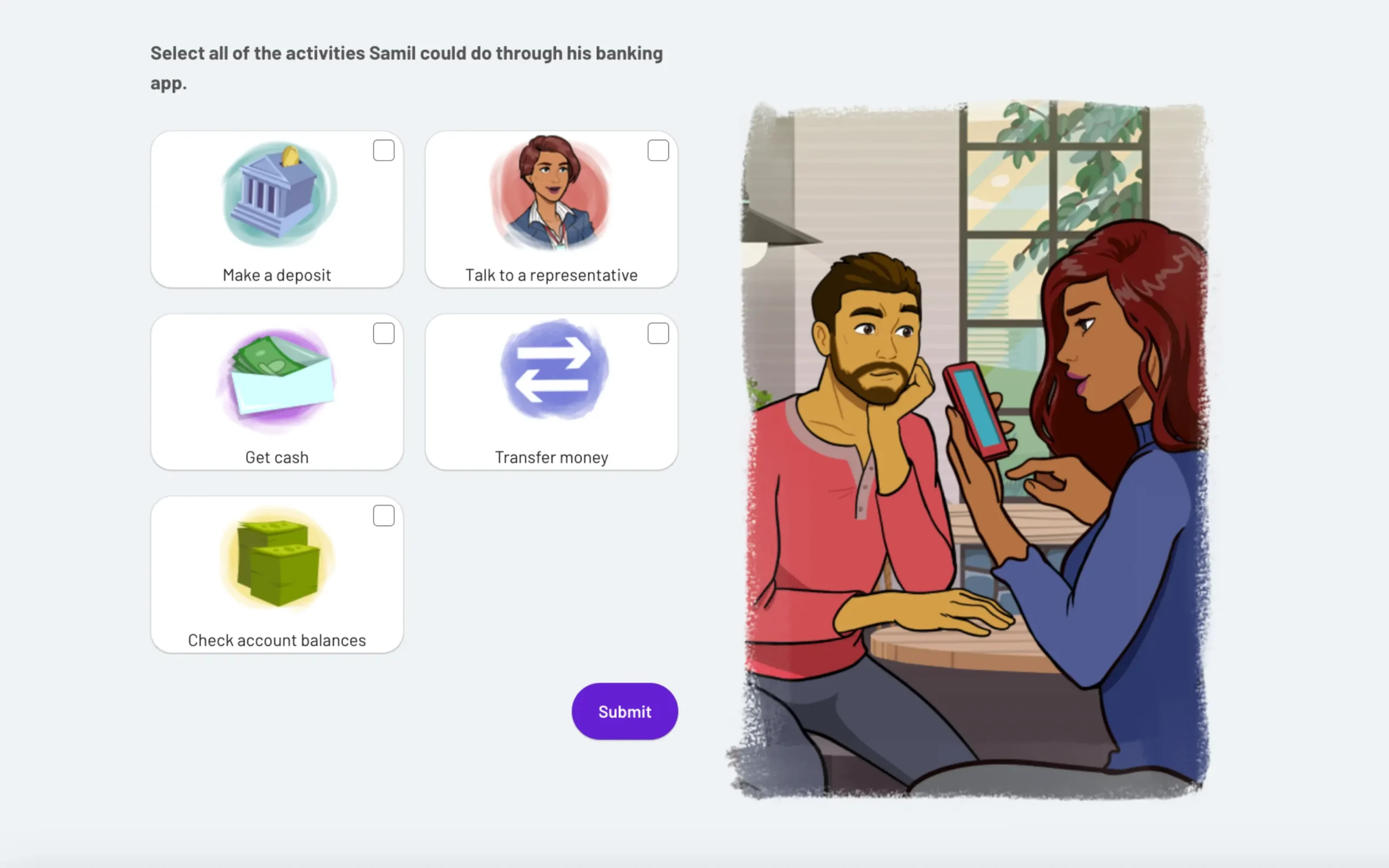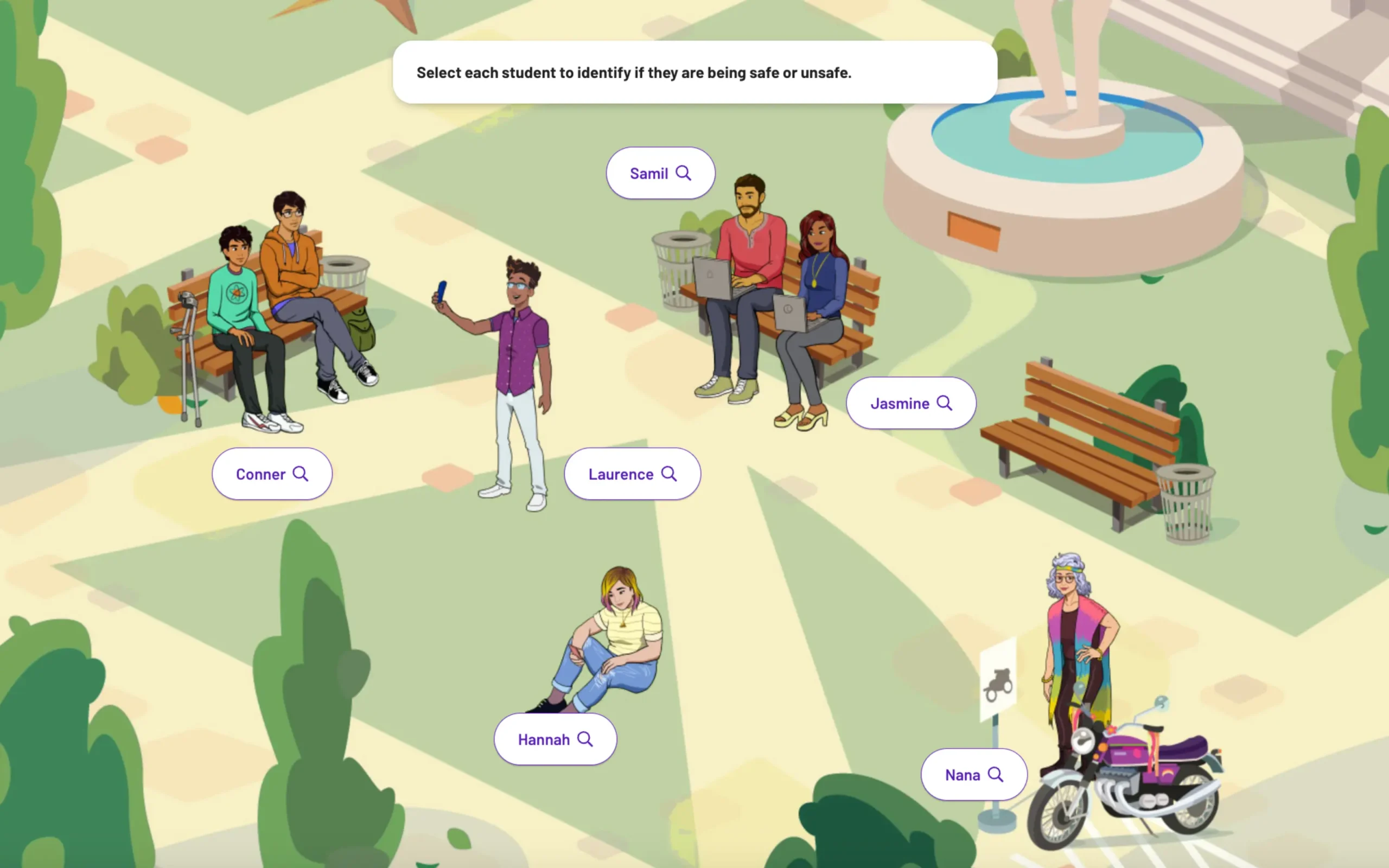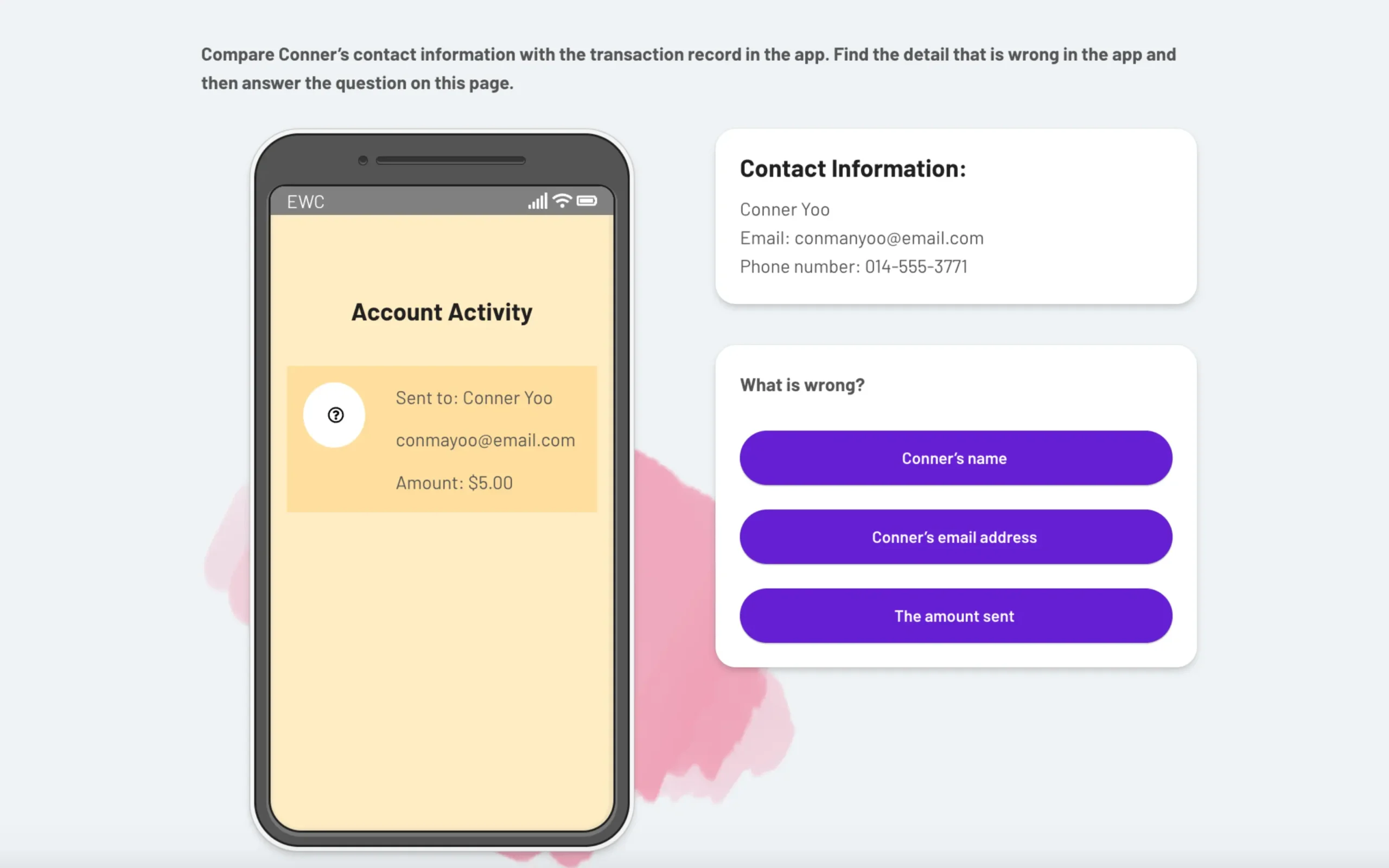Overview
Modern Money: Safe Digital Banking
This financial education course provides students with the knowledge and skills to make wise decisions that promote financial wellbeing. Through interactive real-world scenarios, students learn strategies to manage their finances, how to safely and responsibly use banking tools, and methods to recognize and avoid scams and fraud. The course is designed to create more confident, financially savvy high schoolers that are prepared for adulthood.
Free Digital Lessons for
Students in Grades 9-12


At-A-Glance
Grade Level:
9-12
Languages:
English and Spanish
Length:
4 digital lessons, 20 min each
Curriculum Fit:
Finance, Economics, CTE, Social Studies, Business, and FACS
Standards:
Jump$tart National Standards in K–12 Personal Finance Education

Preview the Digital Lessons
Lesson 1
Introductory Financial Concepts
Lesson 2
Modern Digital Banking
Lesson 3
Identity Theft & Fraud Protection
Lesson 4
Peer-to-Peer Transactions
Lesson 1
Introductory Financial Concepts
Students learn about the benefits of financial institutions, including how to proactively evaluate and seek out financial institutions to meet their needs.

Lesson 2
Modern Digital Banking
Lesson 3
Identity Theft & Fraud Protection
Lesson 4
Peer-to-Peer Transactions
Why Teachers & Students Love This Course
Try Pairing This Course With

EVERFI:
Financial Literacy

Tax Simulation:
Understanding Taxes
Teaching Financial Literacy FAQ
Less than a third of high school juniors and seniors reported that they felt prepared to compare financial institutions and select one that best meets their needs (32%). Slightly more students -- but still less than half (47%) -- felt they could select, open, and manage a savings or checking account.
Young people also reported low levels of confidence in their ability to establish financial habits that contribute to long-term financial wellbeing: budgeting and managing credit. Half of juniors and seniors said they were “prepared” or “very prepared” to set up and follow a budget, while just a third (32%) felt they could check their credit and maintain good credit over time.
These skills budgeting and managing credit – are essential as young people move toward financial independence. The decisions they make in the next one to two years begin to carry consequences that can last much longer, directly impacting their lifetime financial wellbeing.
Yes, given the critical role of skill and confidence in building financial wellbeing, the low levels of preparedness among young people could be a sign of trouble as students finish high school and move toward financial independence.
Students learn the fundamentals of money management in financial literacy classes, including budgeting, saving, paying off debt, investing, and more. This information offers the groundwork for kids to establish sound financial practices at a young age and steer clear of many mistakes that result in ongoing financial difficulties.




